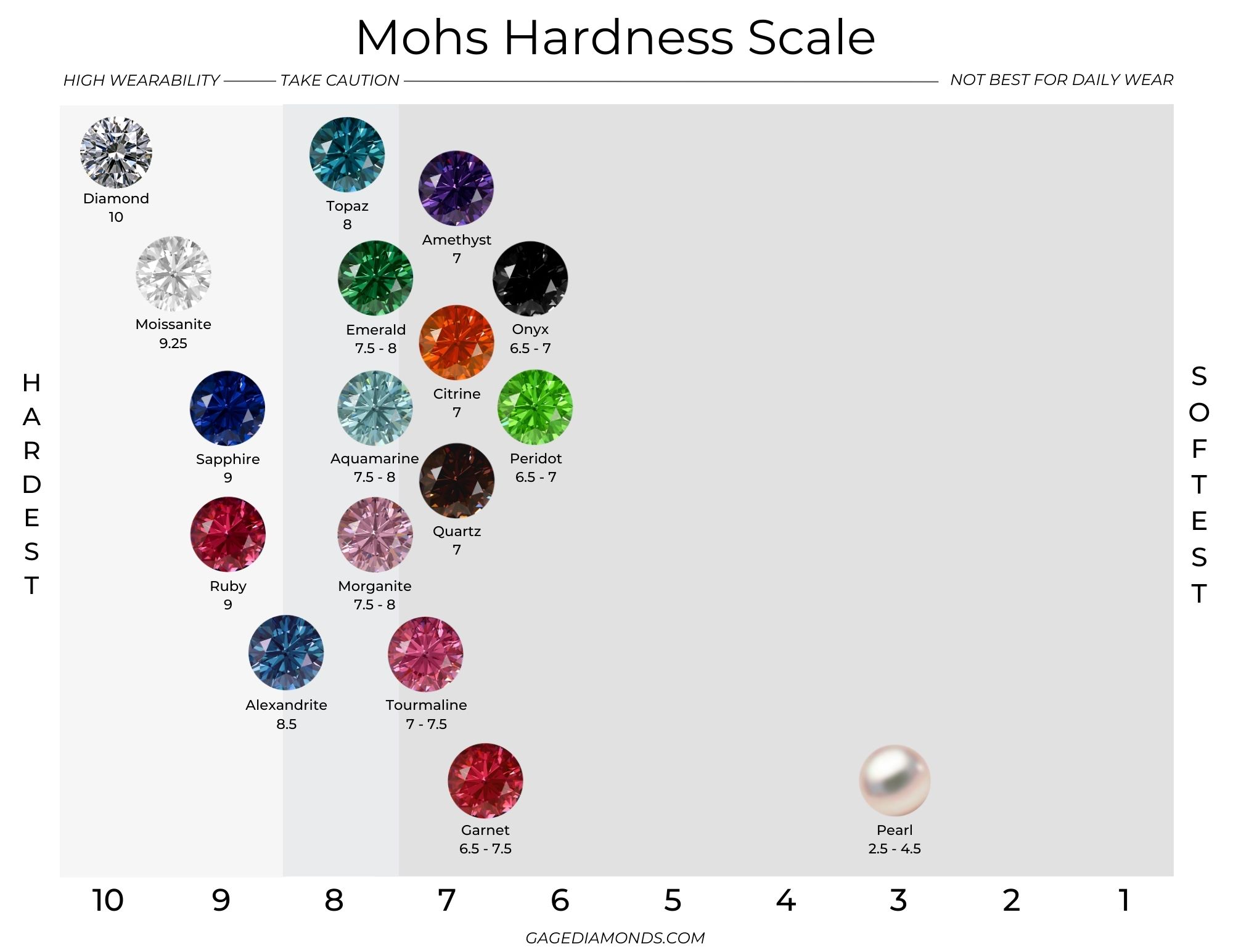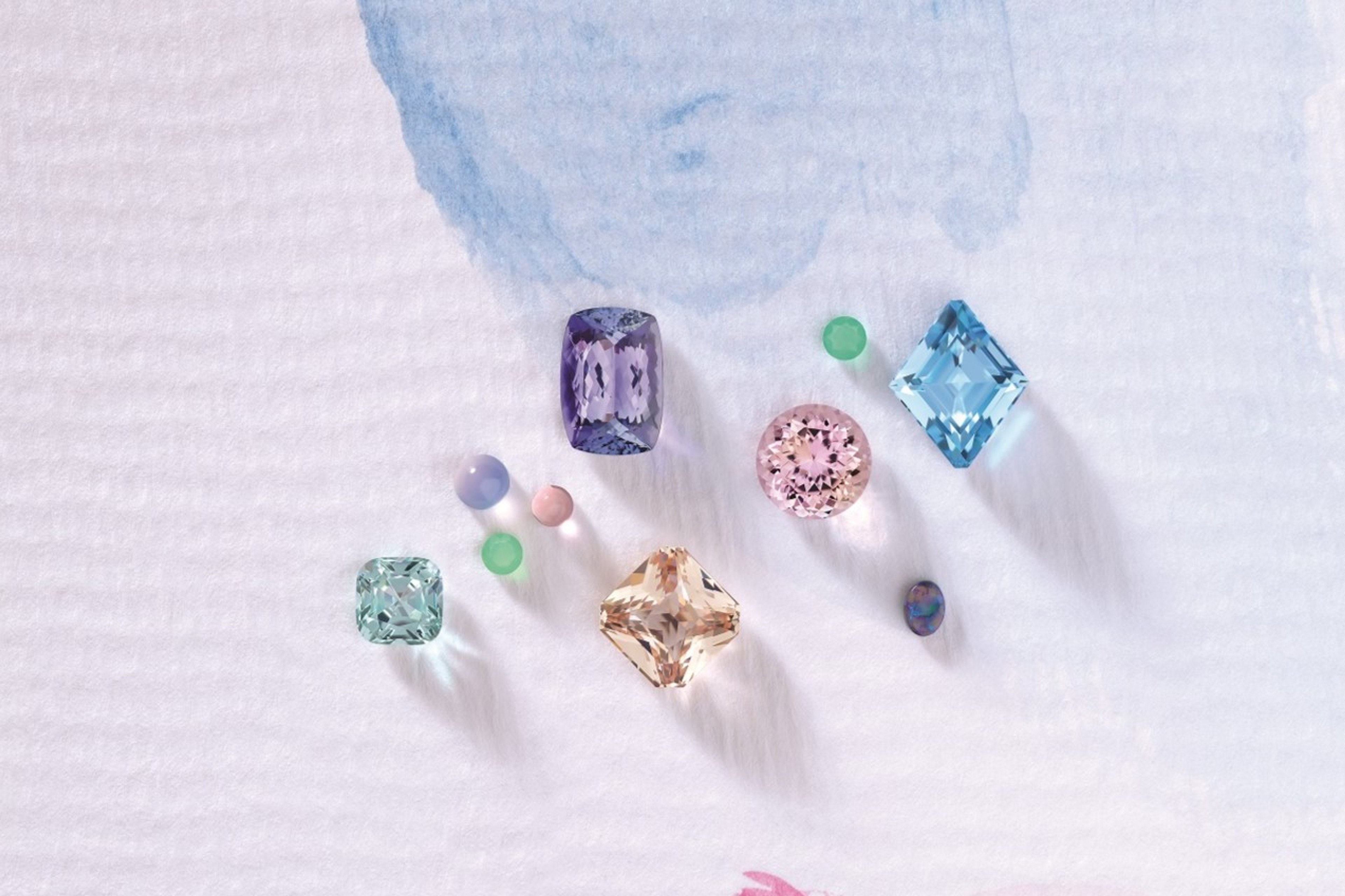When shopping for an important gem, what qualities are meaningful to you? Sparkle? Definitely. Size? It’s hard to pass up a giant rock. But what about its ability to last forever? If you want your stone to withstand daily wear and tear, you should pay attention to its ranking on the Mohs Hardness Scale. Don’t worry if this wasn’t on your radar yet. You’ve come to the right place because we’re about to tell you more!

What is the Mohs Hardness Scale?
Although the concept of measuring stones’ hardness has been around since ancient times, the Mohs Hardness Scale wasn’t introduced until the early 1800s by German geologist and mineralogist Friedrich Mohs. And as the name suggests, it basically indicates the hardness of diamonds, gemstones and other minerals. But when we say “hardness” in the gem world, we really mean “scratch-resistant.”
So, how do you read this scale? It features 10 numbers, and each gem/mineral is ranked, depending on how well it handles scratches in comparison to other stones. No. 1 represents minerals that scratch easily, while 10 represents those that are least scratchable. You’ll also see stones that rank between numbers or have a range of numbers assigned to them. This is due to very slight differences in each gem’s chemical structure.
Gem Rankings on the Mohs Hardness Scale
Now, you might be wondering where some of your favorite gems land on the scale. Let’s start with everyone’s beloved stone: diamonds. These beauties are considered among the most scratch-resistant materials in the world, so they score a perfect 10 on the Mohs Hardness Scale. That includes natural and lab grown diamonds too!
Sapphires and rubies, which both belong to the family of corundum minerals, fall just below diamonds at No. 9. Other popular gems are placed further down on the scale, such as topaz (8), aquamarine (7.5-8), emerald (7.5-8), opal (5.5-6.5) and pearl (2.5-4.5).
But what do all of these numbers mean? The scale also features a handful of everyday objects, such as a knife and copper penny, and their hardness levels. This will help you understand whether your gem can endure scratches from these items. It’s also worth noting that the increases between each number aren’t always even. For example, diamonds and corundum (aka sapphires/rubies) are only separated by one figure on the scale. But in reality, diamonds are actually about four times harder than corundum.
What Grade is Good for Everyday Jewelry?
According to the International Gem Society, stones that score a 7 or higher on the Mohs Hardness Scale should be durable enough for daily wear. However, each gem is different, so you’ll want to do some research before making a purchase.
Remember, rings are more susceptible to damage than earrings and pendants. But if your heart is set on a ring with a softer gem, we recommend saving it for special occasions or choosing a more protective setting, like a bezel setting.
Have a question? We can help!
Gage Diamonds is Chicago's premier jewelry showroom and online retailer of engagement rings, wedding bands, and fine jewelry. We offer a selection of dazzling colored gemstones and handpicked diamonds, including certified natural and lab grown diamonds.
We’re committed to helping you find the ring of your dreams. For inspiration, browse our website or set up an appointment with a member of our trusted staff at our in-person showroom.
We offer no-credit-needed financing – feel free to apply and get your approval within 24 hours!
Pay over time, because love shouldn’t wait.

